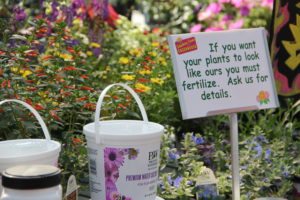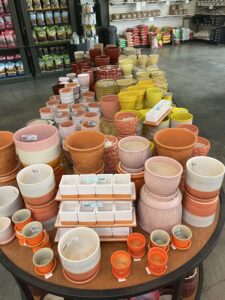Introducing Consumers To IPM
With agricultural sustainability on the minds of many people in the industry and elsewhere, you may want to consider ways you can share its message with your employees and customers, especially in the area of garden pharmacy. Briefly, the sustainability movement is an attempt to provide the best outcomes for human and natural environments now and in the future. While chemicals are often a necessary part of gardening, introducing your employees and, through them, your customers to the idea of integrated pest management (IPM) can help everyone make good decisions when it comes to pest and disease control.
An IPM strategy utilizes multiple forms of control and garden enhancement techniques, everything from using pest-resistant plants to accurately diagnosing a problem to choosing the right chemicals and doses to fix the issue. Most consumers are unaware of IPM even though it isn’t a new idea in the industry; in fact, your customers probably don’t think about control strategies until they’ve encountered a garden problem and are standing in your chemical section, which is why they need IPM education from your employees.
Take The First Step
It is probably easiest to start educating consumers at the beginning of the season when they are choosing plants for their gardens, because one of the main tenets of IPM is avoiding problems. Have employees help customers select plants that will thrive in their gardens. Match varieties to each customer’s unique garden conditions, such as sun or shade and wet or dry. Also, encourage customers to purchase pest-resistant varieties.
While a customer may like large displays of a single variety, recommend that he or she diversify the plantings, as some pests and diseases attack only one plant species, and minimizing large plantings can help stem the spread of the problem if it occurs, making control easier. Small groupings of different cultivars are a good idea for consumers implementing an IPM strategy.
Once customers get their plant purchases home and planted, it’s important they care for them correctly. Certain cultural practices can increase the likelihood of pests and diseases, so it would be beneficial to have a take-home handout available for customers regarding basic home care. The handout can address water practices, fertilization requirements and pruning needs among other topics.
Good Versus Bad Insects
Part of avoiding problems in an IPM program is having customers scout for pests and diseases in their gardens, but customers who garden sporadically may not understand that some pests are beneficial. Thinking they are doing the right thing, these types of customers may even try to eliminate all insects with heavy chemical use. Let them know there are good bugs that help their gardens, and be available to answer their questions when they do find what they think is a suspicious insect.
Beneficial insects are those that are natural predators of the pests your customers are trying to eliminate. Again, a fact sheet with information and pictures of common pests and their natural predators will be helpful to have available for consumers. Think about it: While you may be able to easily identify an aphid, your customers probably cannot.
Choosing The Right Chemicals
Of course, even with all the best avoidance methods in place, pests and diseases can still plague a consumer’s garden. At this point, it is important to inform customers about proper diagnosis and chemical selection and dosing. To help customers determine what they are fighting (and stress the importance of accurate diagnosis), encourage them to bring in samples of effected plant material.
After properly determining a customer’s problem, assist him or her in choosing the right chemical for the situation. Show the customer the pesticide label, which should include application directions and rates, and stress the importance of following the label for the best (and safest) results. Some customers may want to apply the chemical to everything that’s green in their gardens; explain that in an IPM program, they should address only the problem areas.
It’s About Education
The key to a sustainable future is through educating not only your employees but also your customers. You can start at your garden center by talking about IPM with everyone. Making fact sheets available for employees to refer to and customers to take home is a good approach. You can even try adding signage to indicate good pest-resistant varieties. Since garden pharmacy is a broad topic to learn about, consider making one person on your staff the garden pharmacy point person. He or she can be the most well versed on garden problems and their garden pharmacy solutions.


















 Videos
Videos





